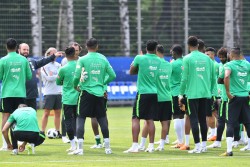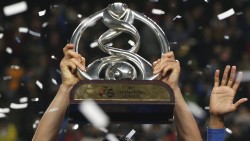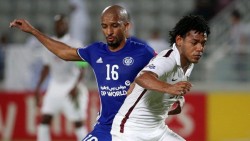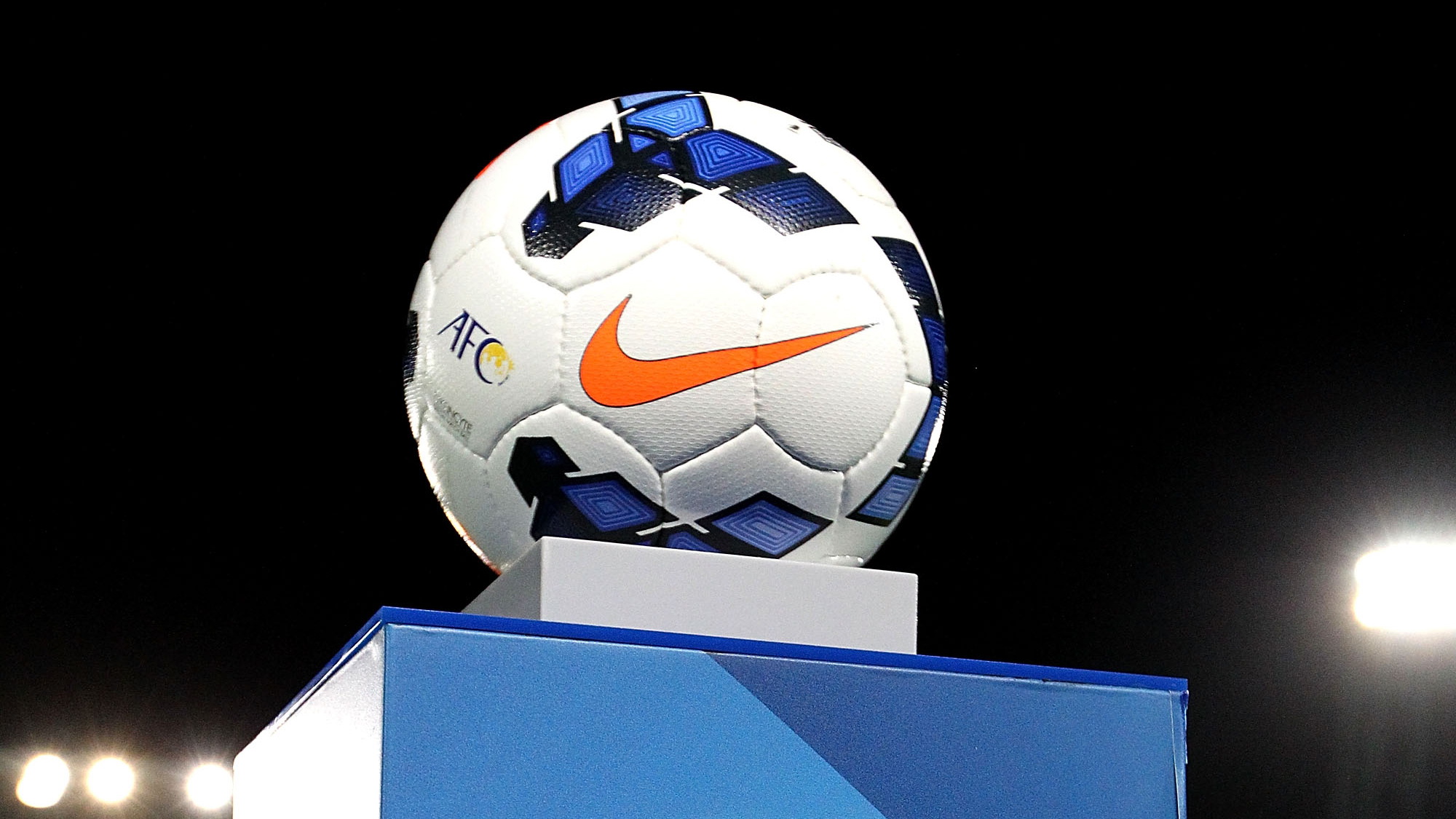-
 Ahdaaf 2018 Predictions
1 year ago
Ahdaaf 2018 Predictions
1 year ago -
 Fahad Al-Ghesheyan: Cruyff of the Desert
4 weeks ago
Fahad Al-Ghesheyan: Cruyff of the Desert
4 weeks ago -
 Iraq’s Ali Adnan explains reasons for his Atalanta exit
2 months ago
Iraq’s Ali Adnan explains reasons for his Atalanta exit
2 months ago -
 Asian Cup star Mohanad Ali to remain in Iraq until the end of the season
3 months ago
Asian Cup star Mohanad Ali to remain in Iraq until the end of the season
3 months ago
TACTICS: How Cosmin Olaroiu nullified Al-Hilal
For arguably the first time in 2015, Al-Hilal looked like the weaker team in a football match. After their renaissance under Giorgios Donis earlier this year they failed to turn possession into chances due to the very smart tactical framework Cosmin Olaroiu – manager of Al-Ahli – put into place.
Minor things have become – ironically – a huge part of football tactics (I wrote about this in-depth in this article for Outside of the Boot). Therefore what Cosmin Olaroiu looked at made the biggest effect on the game, seeing Al-Ahli come away with a vital away goal despite a draw. Al-Ain – a bigger and better club than Al-Ahli (winning the league title that year) – succumbed to a 3-0 loss to Al-Hilal in the same stadium, which is why Al-Ahli’s draw is considered a win in this context.
I spoke about Saud Kariri and Salman Al-Faraj in the preview of the match, looking at how they compare with each other in the roles they play. With the former being 35 years old, it was surprising to see him rooted to the bench with his experience and ability a vital cog in the Al-Hilal system that saw them awkwardly play their way out of defence.
I called it: Al-Hilal would suffer from Al-Faraj’s inferiority in the half back role (Lekhwiya touched upon it in the quarter finals but failed to capitalise on the match due to their defensive mishap). A better team in Al-Ahli did so, making Al-Hilal pay for their mistakes and grabbing a vital goal at one of the hardest stadiums in Asia. This is the 15th consecutive game that Al-Hilal haven’t been defeated in at home in the Asian Champions League.
Al-Ahli set-up
Olaroiu placed the ‘formation’ as a 4-4-2 with two narrow wingers in Ismaeel Al-Hammadi and Everton Ribeiro. His double pivot of local duo Majed Hassan and Habib Fardan was mesmerising once again, both of whom now can showcase their ability on the continental stage.
The space Al-Faraj would operate in was near the strikers of Al-Ahli, positioning himself in between them to receive the ball when possible. This however played into the Red Knights’ hands as efficient pressers Rodrigo Lima and Ahmed Khalil terrorised him wherever he went.
Mission: Nullify Salman Al-Faraj
Al-Faraj had a couple of options left while under pressure, yet these passes could be considered unviable due to them landing backwards, out of the pitch or in areas where they could not affect the centre (or even, the flanks where their superb wing-backs are located).
As versatile as Al-Faraj is he is no Kariri. Kariri is similar to the Busquets of Al-Hilal, with Al-Faraj slightly ahead in an energetic and skillful Iniesta-esque role. Putting that into context, Iniesta would struggle in a role such as Busquets’ that values ultimate perception, movement and body positioning to ensure the safety and smoothness of the build-up.
Lima would harass the nimble Al-Faraj, who would have preferred to use his capabilities in breaking Al-Ahli’s lines via dribbling, and if he ever escaped the menace of Lima, Khalil awaited. Weaker selections from Donis aside, Olaroiu prevailed in a massive encounter. Al-Hilal lacked a ball playing midfielder to break the lines, as they played with two runners in Kaabi and Al-Faraj. Should Kariri have started, Al-Hilal would have had the ability to start with Al-Faraj to break Al-Ahli’s lines subsequently bringing on one of the most intelligent Arab footballers to ever come across Asian football: Mohammad Al-Shalhoub.
Al-Shalhoub is a tactical weapon despite his age, bringing in creativity and understanding to the table. Once again, Donis placed his belief on the young lads which was detrimental to the team’s overall performance.
This forced Carlos Eduardo (usually stationed high up in attacking midfield or alongside the striker) to return all the way to the halfway line to inject speed into the build up. Eduardo essentially was a box to box midfielder himself in this game, making runs forward before returning all the way to the defensive line to aid his teammates.
Eduardo (circled in red, above) was forced to return. This was the first occurrence, where he only had one Al-Ahli player ahead of him! He is being tasked to help the double pivot of Kaabi and Al-Faraj of which has been severely weakened by Al-Ahli’s calculated pressing.
Double pivot worthy of international recognition
Al-Ahli’s best work came from the central midfielders Habib Fardan and Majed Hassan. The latter can be compared to Nabil Bentaleb in his role. A good passer and not easy to push off, but his body positioning in certain situations needs to improve in terms of executing the right pass forwards. At the age of 23, he can certainly build on these qualities to propel him towards replacing Amer Abdulrahman and Khamis Esmail in the UAE line-up, in their bid to qualify for the 2018 World Cup.
Habib Fardan is underrated himself albeit being the most expensive Emirati footballer after his move to Al-Ahli last year. An energetic, technical and no-nonsense midfielder poses the Emirati as a nuisance to opposition midfielders. Whether Olaroiu asks for a composed performance or a broadly attacking one, Fardan is one of the first members under his command and ready for duty.

Here they work with the wide midfielders to halt build-up. Al-Faraj circled in black (left one) and being watched constantly.
These two nullified Al-Hilal’s attacking midfielders and saw Al-Dossary move out to the wing (placing himself in line with the wing backs, which is inefficient and opposed to positional play that is supported in the modern day) to make runs towards there. Ailton was very limited too despite his set-piece goal.
Conclusion
Minor changes led to major results. Al-Ahli now return to Dubai with an away goal, and a 0-0 draw is enough to see them qualify for their first ever final. How will Donis prepare for the second leg? It seems that his decisions have been costing Al-Hilal in recent weeks despite being on great form. Does this indicate that Al-Ahli are a better team? Possibly.
Al-Hilal have had their problems (against Al-Raed, Lekhwiya and Al-Wehda; these differed from an excess of crossing, lack of pivot support and no ball players in midfield plus the massive gap behind the wing backs and in between the centre backs) yet none have been able to capitalise on the fascinating attack of The Blue Wave. On October the 20th, we will see the next of the superb series of matches in West Asia.
Now although Al-Ain’s pair of matches against Al-Hilal in the same round last season, they failed to come away with a respectable result at the King Fahd Stadium (possibly due to the managerial differences between Cosmin Olaroiu and Zlatko Dalic) and thus didn’t have the momentum to overturn a 3-goal deficit. Al-Ahli however, as we have previously mentioned, are sky rocketing with momentum. With their last 90-minute loss coming in a mid-table nothing clash against Baniyas in the Arabian Gulf League (2014-15), things are looking up for The Knights of the United Arab Emirates.
A fan on Arabic TV Show Sada Al-Malaeb shouted: “SALMAN IS NOT A DEFENSIVE MIDFIELDER! SALMAN IS NOT! DONIS NEEDS TO MAKE SURE OF HIS CHANGES!”
- YOUR GUIDE TO SAUDI ARABIA AT THE 2018 FIFA WORLD CUP - June 13, 2018
- Fabio Lopez and his “miracle” job at Al-Ahli (KSA) - April 5, 2017
- 2017 AFC CHAMPIONS LEAGUE PREVIEW: WEST ASIA - February 19, 2017
- تحليل تكتيكي : الوصل 2-1 الوحد - February 3, 2017
- PREVIEW: 2016 ASIAN CHAMPIONS LEAGUE FINAL - November 18, 2016
- Saudi Football’s Liberation Must Wait - September 7, 2016
- WCQ2018 Asia: 6 Talking Points from the Middle East - September 7, 2016
- PRESS TALK: August 31, 2016 - August 31, 2016
- FRIDAY WITH… FABIO LOPEZ - August 26, 2016
- PRESS TALK: AUGUST 25, 2016 - August 25, 2016
Similar posts
-
 World Cup
World Cup
YOUR GUIDE TO SAUDI ARABIA AT THE 2018 FIFA WORLD CUP
-
 AFC Champions League
AFC Champions League
2017 AFC CHAMPIONS LEAGUE PREVIEW: WEST ASIA
-
 AFC Champions League
AFC Champions League
PREVIEW: 2016 ASIAN CHAMPIONS LEAGUE FINAL
-
 AFC Champions League
AFC Champions League
REPORT: EL-JAISH 0-3 AL-NASR
-
 AFC Champions League
AFC Champions League
PRESS TALK: AUGUST 25, 2016
-
 AFC Champions League
AFC Champions League
PREVIEW: EL-JAISH VS. AL-NASR | #ACL2016















Pingback: #SFGTop100 Asia – 71-80 | Sandals For Goalposts()